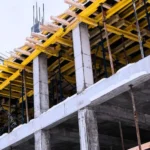In architecture, real estate, and interior design, conveying ideas, showcasing properties, and engaging clients effectively is pivotal. Interactive floor plans have emerged as a transformative tool, reshaping how professionals visualize, present, and communicate their designs. This comprehensive article explores the world of interactive floor plans, delving into their fundamental principles, discussing their profound impact on property visualization and design, and highlighting this innovative technology’s challenges and future directions.
What Are Interactive Floor Plans?
Interactive floor plans represent a dynamic and user-friendly approach to presenting architectural and real estate designs. These digitally enhanced plans provide users with an immersive and engaging experience, allowing them to explore a property’s layout, room by room, and even customize elements like furniture and décor. Accessible through websites, applications, or virtual tours, floor plan solutions have become a versatile tool for architects, real estate professionals, and interior designers to showcase their work and effectively engage with clients.
Key Features of Interactive Floor Plans
Interactive floor plans are equipped with rich features that elevate property visualization and design.
360-Degree Views
These plans often integrate 360-degree panoramic views, allowing users to virtually “walk through” a property. This feature provides an immersive experience, enabling users to examine the property from various angles and perspectives, fostering a deeper understanding.
Customization
Users can personalize the floor plan by adding or removing furniture, altering room layouts, and experimenting with design elements. This empowers users to envision the space according to their unique preferences, making it a powerful tool for design collaboration and decision-making.
Detailed Information
Interactive floor plans offer comprehensive information about each room, including dimensions, materials, and design features. These details are invaluable for clients and users, providing deeper insights into the space and aiding in informed decision-making.
Virtual Reality (VR) Integration
Some advanced floor plan systems incorporate VR technology, allowing users to experience a property in a fully immersive virtual environment. This takes engagement and understanding to the next level, enabling users to virtually “step inside” the design.
Compatibility
Interactive floor plans are designed to be compatible with a wide range of devices, including computers, tablets, and smartphones. This ensures accessibility for a broad audience and caters to different user preferences and devices.
Navigation Tools
Navigation tools such as interactive maps, hotspots, and room labels are often included to enhance the user experience. These tools guide users through the floor plan, making it easy for them to explore and understand the space effectively.
Real-Time Updates
In real estate applications, interactive floor plans can be updated in real time to reflect changes in property availability, price adjustments, or alterations to the layout. This ensures that potential buyers or renters can access the latest information, promoting transparency.
Advantages of Interactive Floor Plans
The adoption of interactive floor plans offers numerous advantages for professionals and clients in architecture, real estate, and interior design.
Enhanced Visualization
Interactive floor plans provide a more immersive and realistic way of visualizing spaces than traditional 2D floor plans or static images. Users can better understand a property’s layout, flow, and design, fostering better decision-making.
Improved Engagement
The interactive elements within these floor plans captivate users’ attention and encourage them to explore the property or design more. This increased engagement leads to better comprehension and appreciation of the space, making it a powerful marketing and communication tool.
Personalized Design
Clients can experiment with various design elements and room layouts, enabling them to participate actively in the design process. This fosters a sense of ownership and ensures the final design aligns with their preferences and vision.
Time and Cost Savings
Visualized floor plans reduce the need for physical site visits or costly design revisions. Professionals and clients can collaborate efficiently and make informed decisions without expensive and time-consuming revisions, ultimately saving resources.
Increased Marketing Effectiveness
In real estate, agents and developers use interactive floor plans to market properties effectively. These plans attract potential buyers and tenants with engaging visual content, helping properties stand out in a competitive market.
Better Communication
Architects and interior designers can leverage interactive floor plans to convey their design concepts more clearly to clients. This fosters improved communication and collaboration, as clients can visualize and interact with the proposed designs, reducing misunderstandings and facilitating effective decision-making.
Applications of Interactive Floor Plans
Interactive floor plans find diverse applications across various industries and sectors.
Real Estate
Interactive floor plans are widely used in property marketing and listings. They provide potential buyers and renters with an immersive and interactive view of properties, enhancing their decision-making process and saving time for both clients and agents.
Architecture and Design
Architects and interior designers present their designs to clients using interactive floor plans. This interactive approach allows clients to explore and customize spaces virtually, facilitating better understanding and collaboration throughout the design process.
Hospitality
In the hospitality industry, hotels and resorts use interactive floor plans to showcase rooms, amenities, and event spaces. This enables guests to make informed decisions before booking, enhancing their experience and satisfaction.
Education
Interactive floor plans have applications in educational institutions. This helps students and staff navigate campuses and facilities efficiently and can be used to provide virtual tours of educational campuses, facilitating orientation for new students and visitors.
Healthcare
Hospitals and medical facilities use interactive floor plans to assist patients and visitors in finding their way within complex healthcare environments. These plans simplify navigation and enhance the overall experience for those needing medical services, reducing stress and confusion.
Challenges and Future Directions
While interactive floor plans offer numerous benefits, they also face challenges and hold potential for future development.
Technology Accessibility
Ensuring that interactive floor plans remain accessible to users with varying levels of technological proficiency is essential for widespread adoption. Key considerations include user-friendly interfaces, clear instructions, and responsive design.
Data Privacy
To protect user information, the collection and storage of user data for interactive floor plans should adhere to stringent data privacy regulations. Transparent data policies, encryption measures, and robust cybersecurity practices are crucial.
Integration with Augmented Reality (AR)
Integrating AR technology into interactive floor plans could take them to the next level. This would allow users to superimpose virtual objects, designs, or information onto real spaces, enhancing their understanding and engagement, particularly in architectural design and property visualization.
Enhanced Mobile Experience
As mobile devices remain a primary platform for accessing interactive content, continuously improving the mobile user experience will be essential. Ensuring that interactive floor plans are responsive and optimized for various screen sizes and devices is crucial for user satisfaction.
Industry-Specific Customization
Tailoring interactive floor plans to specific industries and niches, such as commercial real estate or healthcare, will enhance their usefulness and relevance. Customization options can cater to different sectors’ unique needs and requirements, maximizing their impact.
Sustainability Integration
Incorporating sustainability features into interactive floor plans, such as highlighting energy-efficient design elements or eco-friendly materials, will align with the growing emphasis on environmental sustainability in architecture and real estate. This can contribute to raising awareness and promoting sustainable practices.
Conclusion
Interactive floor plans represent a paradigm shift in interacting with and understanding spaces. They provide a dynamic and engaging means of visualizing designs and properties, offering enhanced engagement, personalization, and cost-efficiency. As technology advances, the future of interactive floor plans holds the promise of even more immersive experiences and broader applications across various industries. Challenges related to accessibility, data privacy, and technology integration must be addressed as this innovative technology becomes increasingly integral to architecture, real estate, and interior design. Interactive floor plans are a tool and a catalyst for redefining how we perceive and interact with the spaces that shape our lives, facilitating more informed decisions, and driving innovation in design and property visualization.












